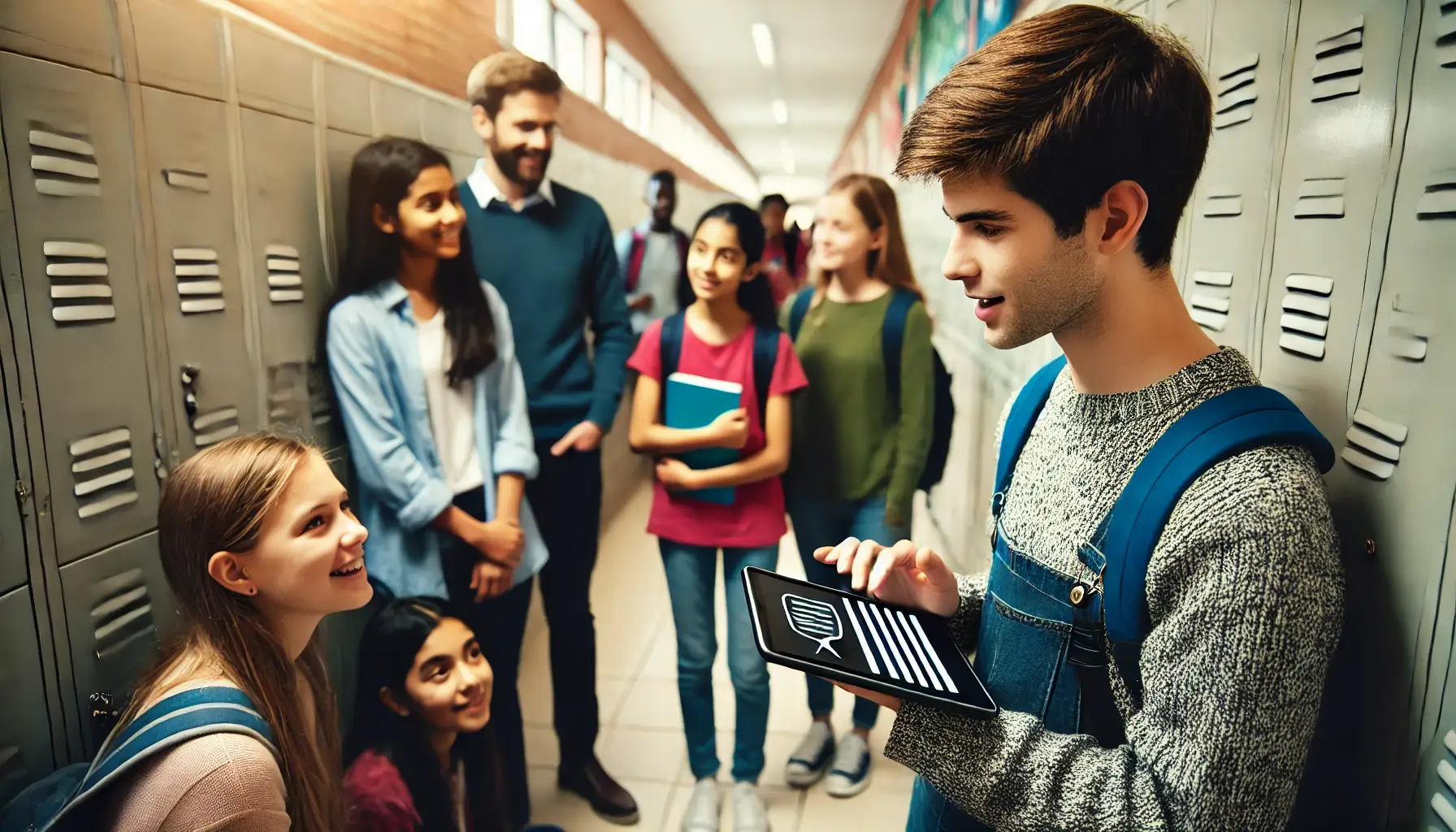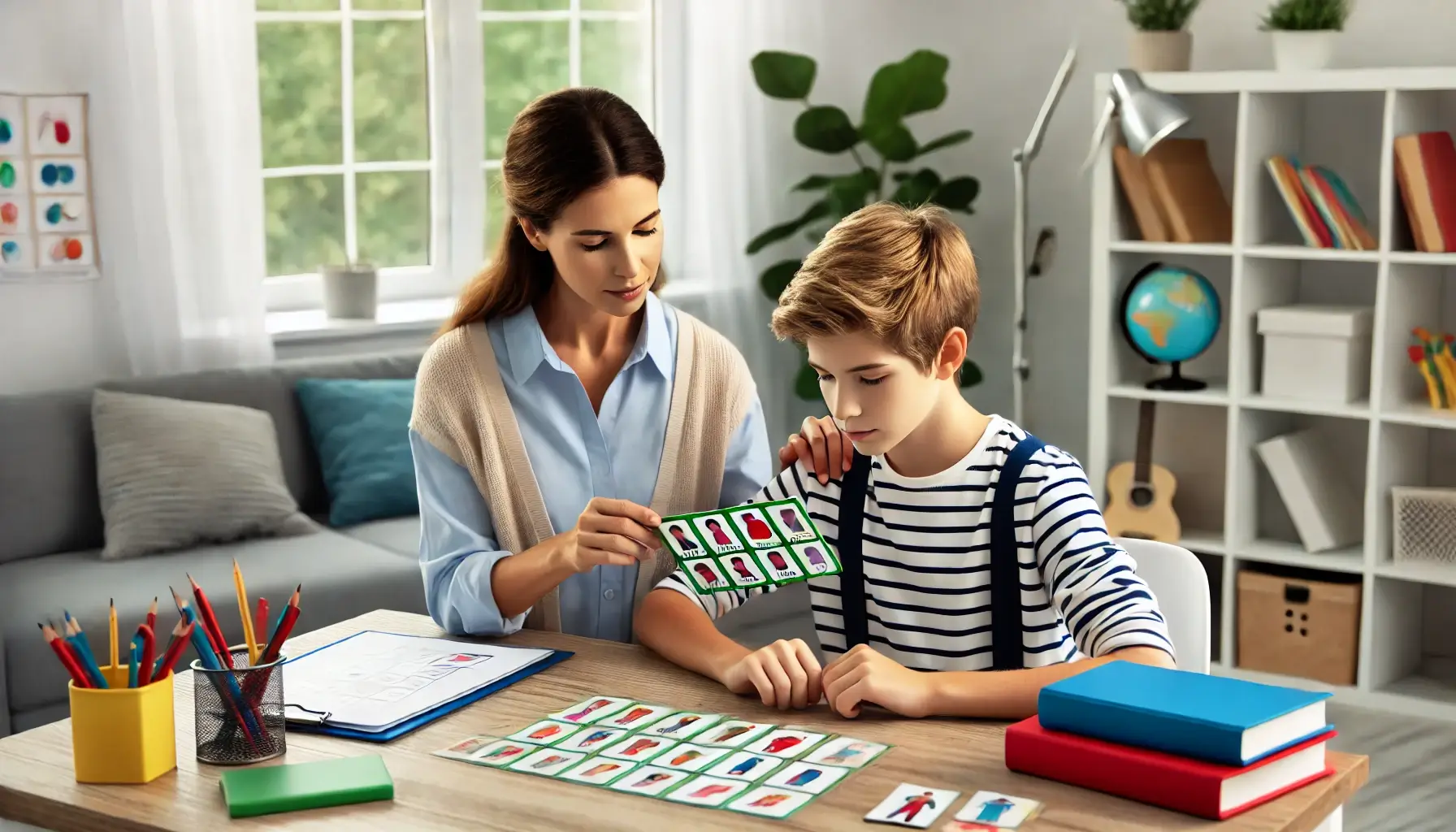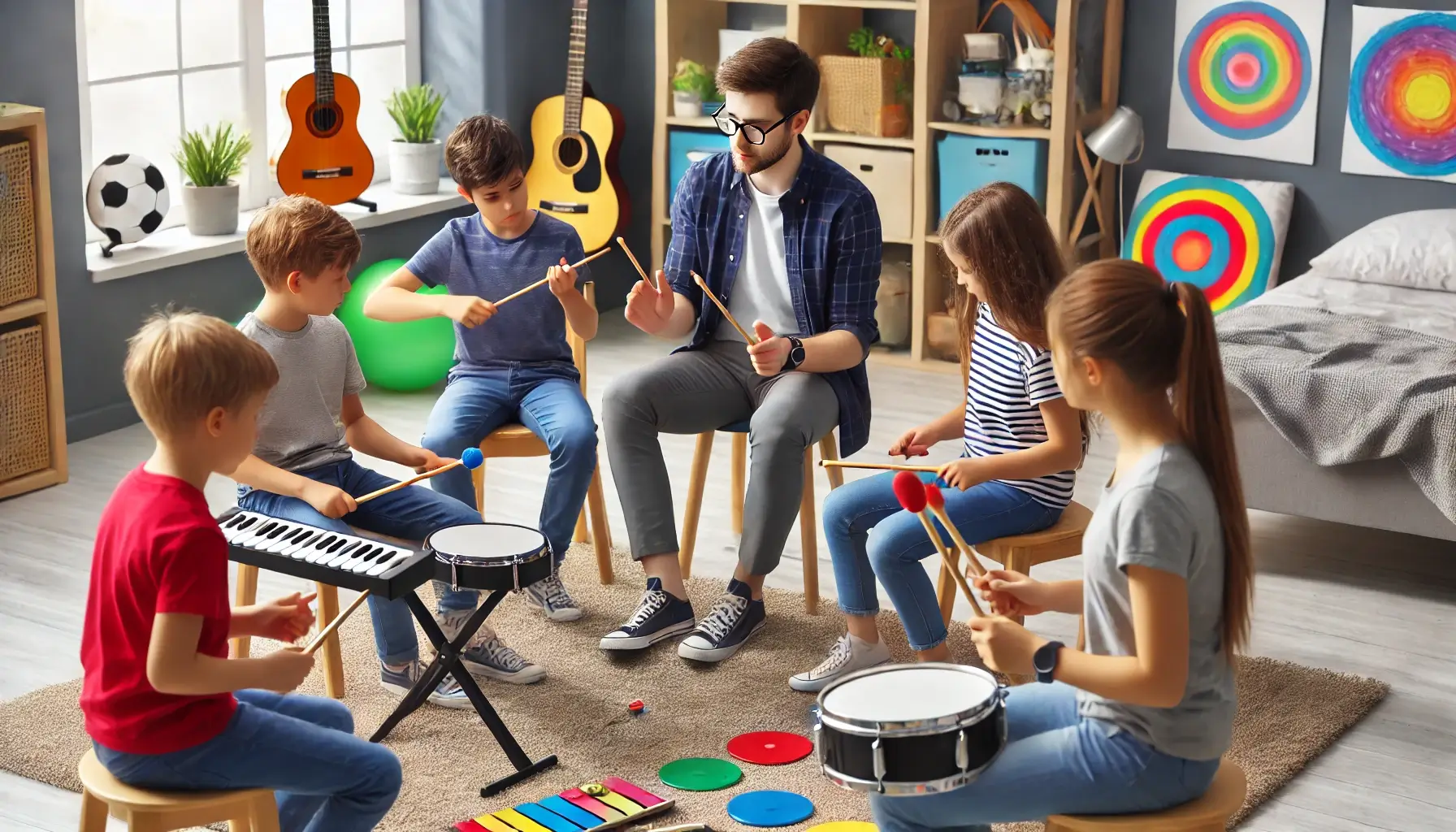IEP Goals for Nonverbal Students: Functional Communication Strategies

Introduction

Setting communication goals for nonverbal students is crucial for their development, ensuring they can effectively express their needs and thoughts. Individualized Education Programs (IEPs) play a significant role in supporting nonverbal communication. These tailored plans address the unique challenges faced by nonverbal students, offering a structured approach to their communication needs.
IEPs are designed to provide personalized goals that cater to each student's specific requirements. This article will cover key areas such as IEP goals, functional communication, speech and language support, and autism-specific strategies. By understanding these areas, educators, parents, and specialists can collaborate to create effective communication plans.
Functional communication is essential for nonverbal students, allowing them to interact meaningfully with others. Speech and language support is also vital, providing tools and techniques to enhance communication abilities. Additionally, specialized strategies for students with autism can address their unique communication barriers.
By focusing on these components, we can ensure that nonverbal students receive the support they need to succeed. This article will provide valuable insights and practical tips for setting and achieving communication goals, benefiting nonverbal students and helping them reach their full potential.
Understanding IEP Goals for Nonverbal Students
Importance of Individualized Education Plans (IEP) for Nonverbal Students
Individualized Education Plans (IEPs) are essential for addressing the unique communication challenges faced by nonverbal students. These plans are tailored to meet the specific needs of each student, ensuring that their communication skills are effectively supported and enhanced. Nonverbal communication plays a crucial role in the development of social-emotional learning and communication skills, which are vital for nonverbal students to interact meaningfully with others.
IEPs focus on creating specific goals related to improving functional communication skills, which can be tailored to the individual needs of each student. By setting clear and achievable objectives, IEPs help nonverbal students develop basic communication skills and enhance their overall speech and language development.
For more details on setting goals for students, visit Goalsetting.online.
Setting Specific and Measurable Goals in IEP for Nonverbal Communication
Effective IEP goals for nonverbal communication should be specific and measurable, following the SMART criteria: Specific, Measurable, Achievable, Relevant, and Time-bound. These goals focus on improving the student's ability to communicate using alternative means of communication, such as communication boards, AAC devices, and other functional communication systems.
- Using a communication board to request items during class activities
- Developing the ability to use sign language for basic interactions
- Practicing turn-taking in conversations with peers
These goals ensure that the student's progress can be tracked and adjusted as needed to promote functional communication effectively. By setting clear and targeted goals, educators can support the development of essential communication skills in nonverbal students.
For more guidance on setting effective IEP goals, visit Understood.org.
Collaborating with Parents and Specialists to Establish Effective IEP Goals
Collaboration between parents, teachers, and specialists is vital for establishing effective IEP goals. This teamwork ensures that the goals are tailored to the student's unique communication needs and that everyone involved is working towards the same objectives. Regular meetings and open communication among the IEP team members help in developing strategies for supporting nonverbal communication and addressing any challenges that arise.
- Holding regular IEP team meetings to discuss progress and adjust goals as needed
- Sharing updates and strategies among team members to ensure consistency in communication methods
- Involving parents in the goal-setting process to incorporate their insights and observations
By fostering strong communication and collaboration within the IEP team, nonverbal students receive comprehensive support that addresses their speech and language delays and enhances their overall communication skills.
Developing Functional Communication Skills for Nonverbal Students

Utilizing Speech Therapy to Enhance Communication Skills
Speech therapy is essential for enhancing communication skills in nonverbal students. Speech therapists use a variety of techniques to help these students develop functional communication abilities. These techniques may include using AAC devices, teaching sign language, and practicing gestures.
Goals for speech therapy can include:
- Using AAC devices to express basic needs
- Learning and using sign language for common interactions
- Developing the ability to use gestures for communication
Speech and language delays can significantly impact a student's ability to interact with others, making speech therapy a crucial intervention. By focusing on these specific goals, speech therapy can support nonverbal students in improving their communication skills and enhancing their ability to participate in daily activities.
For more information on functional communication skills for non-verbal student, visit Behavioral-innovations.com.
Implementing Strategies to Support Nonverbal Communication in Daily Life
Supporting nonverbal communication in daily life involves practical strategies that parents and teachers can use to promote functional communication. These strategies include using visual aids, gestures, and sign language to help nonverbal students express their needs and interact with others.
Effective strategies for supporting nonverbal communication include:
- Using picture cards to represent common items and actions
- Encouraging the use of gestures to indicate needs and desires
- Implementing visual schedules to provide a clear structure for daily activities
By consistently using these strategies, nonverbal students can improve their communication skills and participate more fully in daily life. Supporting nonverbal communication in this way ensures that the goals remain focused on enhancing the student's ability to interact meaningfully with others.
For additional tips on goal setting and planning, refer to Goalsetting.online.
Exploring Alternative Communication Systems for Nonverbal Students
Alternative communication systems, such as AAC devices and communication boards, provide essential tools for nonverbal students to express themselves. These systems offer various options for students to communicate their needs, thoughts, and feelings effectively.
Examples of alternative communication systems include:
- AAC devices that allow students to create messages using pictures or text
- Communication boards that display common words and phrases
- Picture Exchange Communication System (PECS), which uses pictures to represent words and actions
These systems can significantly enhance the quality of life for nonverbal students by providing reliable means of communication. By incorporating these tools into their daily routines, students can improve their ability to interact with others and express their needs more effectively.
To learn more about AAC systems, check out ASHA.org.
Addressing Challenges and Barriers in Nonverbal Communication

Understanding Nonverbal Communication Cues for Better Social Interaction
Recognizing and interpreting nonverbal cues is essential for better social interaction with nonverbal students. Common cues include facial expressions, body language, and gestures. For instance, a student might point to an object they want or use facial expressions to show their feelings. Understanding these cues helps in responding appropriately and fostering better communication.
Dealing with Communication Difficulties in Nonverbal Students with Autism
Nonverbal students with autism often face unique communication challenges. These may include difficulty in understanding social cues or expressing their needs. Strategies to overcome these barriers include:
- Using visual supports like picture schedules
- Implementing consistent routines
- Providing clear and simple instructions
- Encouraging the use of AAC devices
For more information on therapy goals, visit Goalsetting.online.
Enhancing Social Communication through Functional Goals
Incorporating Social Skills Development in Functional Communication Goals
Social skills are crucial for nonverbal students to interact meaningfully with others. Functional communication goals should include the development of these skills. Examples of social skills goals for nonverbal students include:
- Initiating greetings and farewells using gestures or AAC devices
- Requesting help or items using visual aids
- Following simple instructions in group activities
Encouraging Effective Communication Strategies for Nonverbal Individuals
Various communication strategies can significantly improve the interaction abilities of nonverbal students. Consistency and reinforcement are key to ensuring these strategies are effective. Some effective communication strategies include:
- Using visual schedules to provide a clear structure
- Implementing a reward system for successful communication attempts
- Engaging in regular practice sessions for using AAC devices
Effective communication goals in an IEP require collaboration between the IEP team members. This includes teachers, parents, and specialists working together to support the student. Roles and responsibilities should be clearly defined, ensuring that everyone contributes to the student's progress.
For more information on individual goals at work, visit Goalsetting.online.
Collaborating with IEP Team for Improved Communication Skills

Establishing Effective Communication Goals with the IEP Team
Collaboration within the IEP team is essential for setting effective communication goals for nonverbal students. This teamwork ensures that all aspects of the student's needs are addressed. Each team member, including teachers, parents, and specialists, plays a vital role in supporting the student's progress. Regular meetings and open communication help in aligning goals and strategies.
Incorporating Verbal and Nonverbal Communication Objectives in IEP Plans
Integrating both verbal and nonverbal communication goals in IEP plans ensures a comprehensive approach to improving communication skills. Examples of combined communication objectives include:
- Using gestures to complement verbal requests
- Encouraging the use of sign language along with spoken words
- Implementing AAC devices to support verbal communication efforts
By focusing on both verbal and nonverbal goals, the IEP team can provide a balanced and effective communication plan for the student. This holistic approach helps in addressing all areas of communication, ensuring the student's needs are fully met.
Through effective collaboration and integration of comprehensive communication objectives, we can significantly enhance the communication skills of nonverbal students, leading to better educational and social outcomes.
Utilizing Pragmatic Language and Social Skills Development
Enhancing Social Communication through Pragmatic Language Skills
Pragmatic language skills are essential for effective social communication. These skills help nonverbal students understand and use language in social contexts. Strategies for developing pragmatic language skills include:
- Teaching appropriate greetings and farewells
- Practicing turn-taking in conversations
- Using role-playing activities to understand social scenarios
For more on setting boundaries and goals, see Goalsetting.online.
Improving Social Situational Awareness in Nonverbal Students with Autism
Social situational awareness helps nonverbal students understand and respond appropriately to different social contexts. Techniques to enhance situational awareness include:
- Using social stories to explain different social situations
- Implementing visual cues to guide appropriate responses
- Encouraging observation of peers in social settings
Conclusion
Supporting nonverbal communication skills in children with autism is essential for their development. For children with autism spectrum disorder, speech therapy goals and functional communication training are crucial. Developing effective IEP goals that include both speech and language IEP goals and non-verbal communication methods can significantly improve social communication skills.
Setting IEP goals for nonverbal children should include specific goals and objectives that enhance social communication in various grades, including grade 12. Utilizing resources like an IEP goal bank can help tailor goals to the child's needs, ensuring the goals remain focused on enhancing speech development and supporting functional communication.
Understanding that behavior is communication, interventions should be designed to support nonverbal children without inhibiting speech production. Goals for autistic kids should emphasize the importance of nonverbal communication in social situations and daily interactions. Functional communication goals for children should address nonverbal communication difficulties and support social-emotional learning and communication.
By recognizing that nonverbal communication is crucial, we can explore the importance of nonverbal methods and ensure that the child's IEP includes chosen communication methods that work best for them. Through this approach, we can effectively support children with speech and language delays, ensuring they have the tools and skills needed for successful communication.
FAQs
What are IEP goals for nonverbal communication?
IEP goals for nonverbal communication are specific objectives tailored to improve a student's ability to communicate. These goals can include using AAC devices, learning sign language, or enhancing gesture-based communication. The goals are designed to be achievable and measurable, ensuring that the student's progress can be tracked over time.
How can speech therapy help nonverbal students?
Speech therapy provides vital support for nonverbal students by introducing various communication methods such as sign language, AAC devices, and gestures. Speech therapists work closely with students to develop these skills, helping them find effective ways to express their needs and thoughts. For more information, visit ASHA.org.
What are functional communication goals for autism?
Functional communication goals for students with autism focus on practical skills that allow them to communicate their needs and desires. Examples include:
- Using picture exchange systems to request items
- Developing the ability to indicate choices using gestures or AAC devices
- Learning to follow simple verbal instructions
How do I set effective communication goals for nonverbal students?
Setting effective communication goals involves using the SMART criteria: Specific, Measurable, Achievable, Relevant, and Time-bound. Goals should be tailored to the student's unique needs and abilities, ensuring they are realistic and focused on practical communication skills. Collaboration with parents, teachers, and specialists is crucial for setting these goals.
What are some alternative communication methods for nonverbal students?
Alternative communication methods for nonverbal students include:
- Augmentative and Alternative Communication (AAC) devices
- Picture Exchange Communication System (PECS)
- Sign language
- Communication boards
For more details on AAC, visit Therapyworks.com.